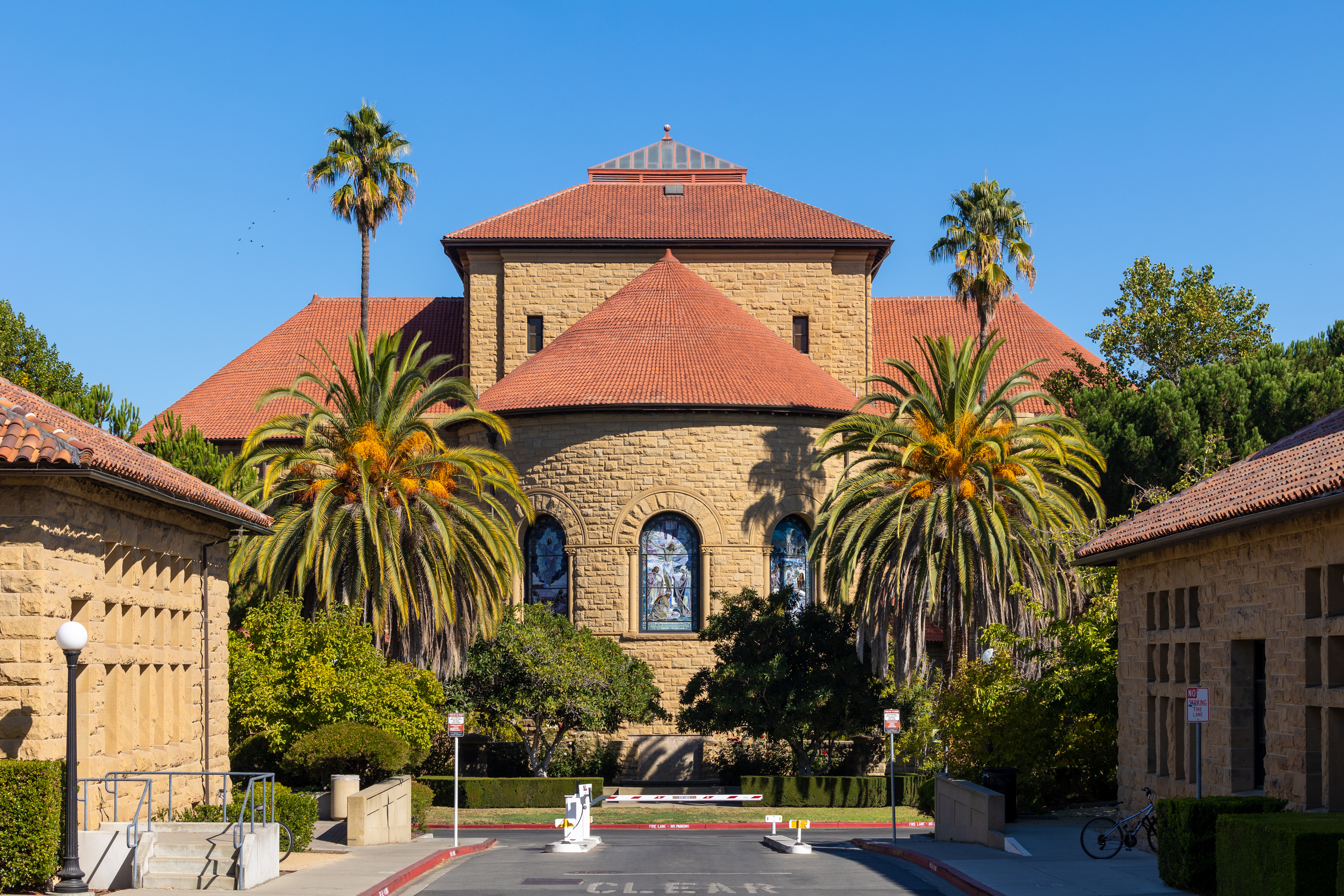Sitting in the upstairs of our dining hall, my friend and I were about to leave to visit the Memorial Church. Earlier that day, I was telling her about how much I liked old-yet-beautiful things, like the frescoes of old churches whose colors are fading away through time and old Greek statues with elegant faces. I told Analiese about the cultural elements of my home country, and she listened to me, and I listened to her stories about growing up by the ocean in Los Angeles. We are from completely different parts of the world, the east and the west, but our stories about lands far away from us are appealing in some sense. I had never been inside Stanford’s church, much to Analiese’s surprise. The truth is, I had tried to go inside the church numerous times before; I would stop biking to see if the doors were open, but they never were.
The mass had already started when we arrived. As I followed Analiese through the gates of the church, I was simply marveled by the mosaics surrounding us — colorful figures amongst the golden background and delicately crafted walls depicting biblical stories. We walked through the aisle and sat somewhere in the middle. There, when I raised my head to observe the circular ceiling of the center, I saw figures with wings at the corners of the circle, similar to those depicted at the Haghia Sophia in Istanbul.
For a second, I was in Istanbul again, my home, staring at the beautiful, old, mystical art depicted on the walls of the ancient church. I started thinking about Istanbul, the chaotic, cold, crowded streets of my hometown, and I thought about the bombing that had happened recently in one the most popular and crowded streets of the city, Istiklal Street, which happens to be one of my favorite places. I thought about the people whose lives were taken so unexpectedly, and how random life feels.
There, as I was lost amongst these thoughts, my mind returned to Stanford, as I heard the priest begin a story that pulled me in. It was as if he wanted me to hear it. He said one day, people were staring at a beautiful temple and talking about how beautiful its stones were, and Jesus told them that this temple that they are admiring will one day fall down and get broken down into its pieces. I thought about Istiklal again as the beautiful temple of this story, and how a bombing happened — destroying the temple — and the heaviness of the catastrophe. As a center of the art scene with numerous galleries, Istiklal is a street that I once walked to a lot. I suppose I should be feeling safe to be in the US, but, here, amongst the mystical sounds of the church organs, I was confused about how to react to this bombing that happened in my sacred place.
I thought about the Instagram stories my Turkish friends shared when the bombing happened. There have been a few days since the bombing happened and people aren’t posting stories about it anymore. I feel as though it is a modern sensation to share these stories, showing off to everyone that you care about what’s going on and how socially aware of a person you are. Then, a day passes, and we forget about what had happened, as though our memories get erased together with the Instagram stories that get lost in twenty-four hours.
The mass continued as I followed Analiese in how I should act and when to stand. Sitting down while listening to the music of the organ, I turned my head around to stare at the beautiful mosaics around me, trying to understand the stories that are pieced together. As I was staring at the depiction of two figures in a forest that I assumed to be Adam and Eve, I heard the priest say something about praying for the people who are not with us anymore. I thought about the families of the people who died in the Istiklal bombing.
I continued to stare at the mosaics. I thought again about what the priest said about beautiful things falling apart, and I thought about what would happen to this church through time. Then, I remembered the 1906 Earthquake that damaged the church, and yet it was standing with glory once again.
Perhaps things fall apart, but they rise again. Perhaps this is the cycle of how things go in life. Unexpected things happen, but we continue to live.
As we left the church, I wasn’t sure how I felt about this experience. Perhaps I look at the bombing in Istiklal like how I stare at the mosaics inside the church — an outsider staring; I am simply watching these events go by without interfering in them. I wanted to feel recharged and mediated after this experience, but there was a sense of distance in my heart from the outside world. Sheltered inside this heavenly campus, I feel distant from the real problems of my home country. I wondered if I would be feeling the same insensitivity if I was still in Istanbul. Perhaps I would, and perhaps this “la belle indifference” to outside events is shared by us all in today’s individualistic world. The heaviness of events vanishes too fast. I will only be left with an ephemeral reminder of the Istiklal bombing too soon as life continues.
I walked out of the gates of the church, thinking about how I wanted a warm coffee then, similar to how people will continue to walk in Istanbul again, thinking about their lives and their lives only, as the bombing becomes a distant, inexplicable, memory.
